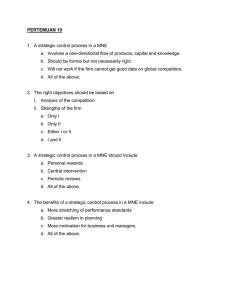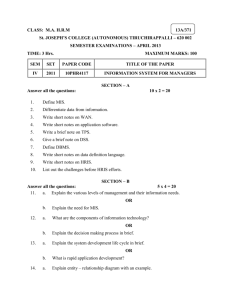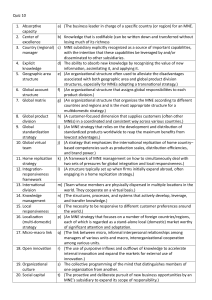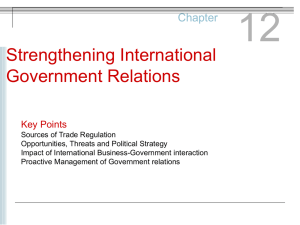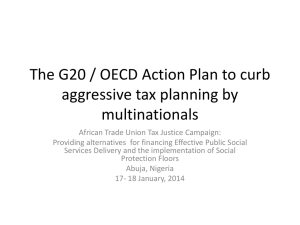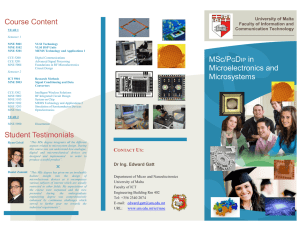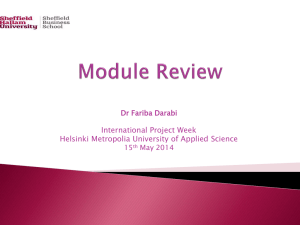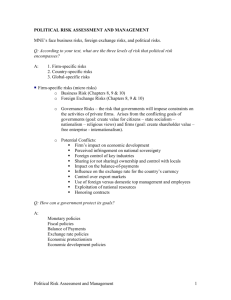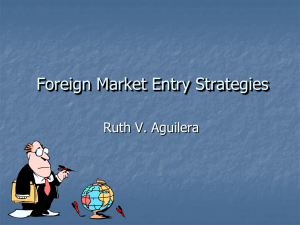303-a-ST - St.Joseph's College
advertisement
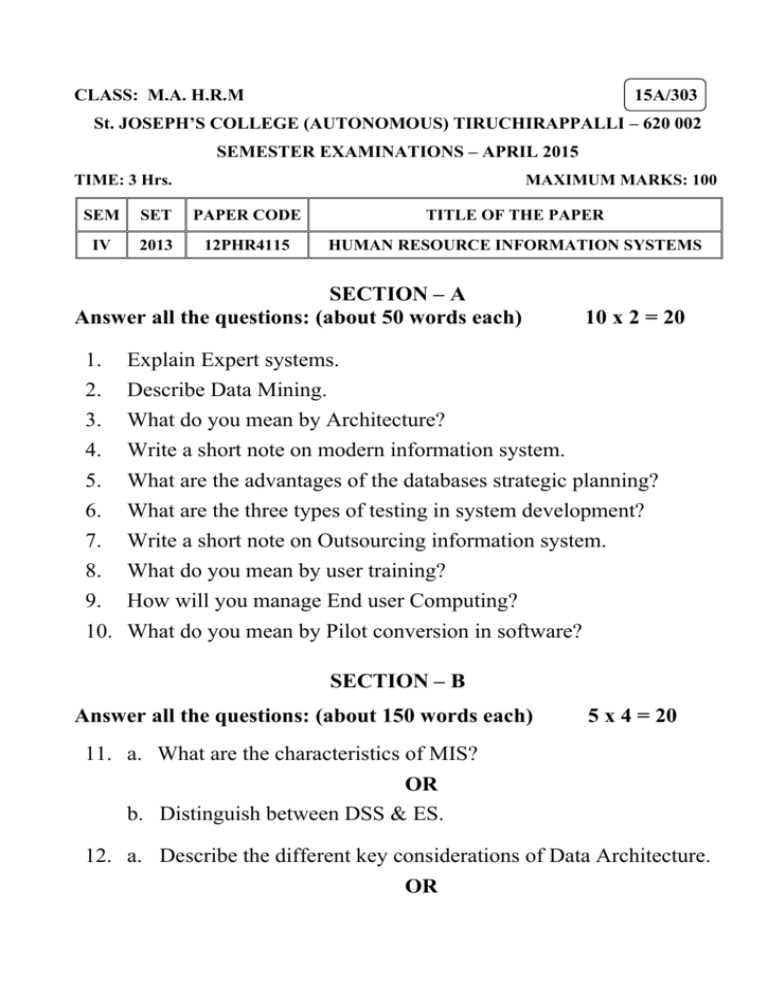
CLASS: M.A. H.R.M 15A/303 St. JOSEPH’S COLLEGE (AUTONOMOUS) TIRUCHIRAPPALLI – 620 002 SEMESTER EXAMINATIONS – APRIL 2015 TIME: 3 Hrs. MAXIMUM MARKS: 100 SEM SET PAPER CODE TITLE OF THE PAPER IV 2013 12PHR4115 HUMAN RESOURCE INFORMATION SYSTEMS SECTION – A Answer all the questions: (about 50 words each) 10 x 2 = 20 1. Explain Expert systems. 2. 3. 4. 5. 6. Describe Data Mining. What do you mean by Architecture? Write a short note on modern information system. What are the advantages of the databases strategic planning? What are the three types of testing in system development? 7. 8. 9. 10. Write a short note on Outsourcing information system. What do you mean by user training? How will you manage End user Computing? What do you mean by Pilot conversion in software? SECTION – B Answer all the questions: (about 150 words each) 5 x 4 = 20 11. a. What are the characteristics of MIS? OR b. Distinguish between DSS & ES. 12. a. Describe the different key considerations of Data Architecture. OR b. What are the components of DBMS? 13. a. Explain the concept of Planning for HRIS Development. OR b. What are the different phases of System Implementation? 14. a. What are the approaches adopted in the Hardware Evaluation? OR b. What are the different steps adopted in Software Installation? 15. a. What are the technology issues in Selection? OR b. What are the different attributes of the Recruitment Website? SECTION – C Answer any FOUR questions: (about 500 words each) 4 x 15 = 60 (Question -20 compulsory) 16. Discuss elaborately on MIS. 17. Illustrate the different models of Database. 18. Illustrate the different stages of System Development Life Cycle. 19. Elaborate the System model for Training and Development. 20. Case study: A large MNE in the cookware industry was having difficulties maintaining its market share due to a number of mergers among other competing firms in the industry. The MNE, with corporate headquarters in Canada, had production plants in 15 countries and a company presence in a total of 29 countries. Although the firm had a number of competitors, their product was considered as having the highest quality the Mercedes of cookware. The firm was family owned and founded in 1937. The most pressing problem was how the firm could stay competitive in the market place and stop decreases in sales. Naturally, it was highly desirable to increase the sales beyond the average annual sales, but first, the firm had to change something to stabilize its place in the market. The CEO and the corporate board, consisting of all the corporate vice presidents as well as the CEOs of all the international locations, examining the problem, concluded that it was necessary to reduce operating costs by 5% from 6% to remain competitive. Thus, it was decided to determine if these cost savings could be achieved in operations, raw materials, finances, or HR. The MNE managers examined the latest production technology in their industry. The firm discovered that its technology was fairly up-to-date and the few technological changes available would only help decrease costs by less than 1%. However these modifications to their current technology were very expensive and did not appear to have a favorable return on investment. Trying to obtain better financing was nearly impossible since the MNE had very favorable financing currently. The same was true for raw materials, since a decision to use cheaper materials would greatly reduce the quality of their products. As a result, the management of the MNE asked the IHRM department for some suggestions as to how personnel costs could be trimmed. However, there was one constraint established by tradition in the company. The MNE had never had a lay-off of employees in its history, and the CEO refused to use this option to reduce personnel costs. One of the complicating factors was the different labor laws as well as the very different cultures in 29 countries in which the MNE did business. Questions: 1. How would you approach a solution to this problem for the MNE? 2. Assuming that reducing personnel costs is the best, and probably only, way to reduce costs? And why? 3. How would an HRIS for the MNE aid in finding HR programs to help solve this problem? What would be the important data to access in the HRIS for all the units and divisions of the MNE to determine feasible HR programme? 4. Are the problems of reaching personnel costs for an MNE different from those for a domestic-only company? Explain. **************

